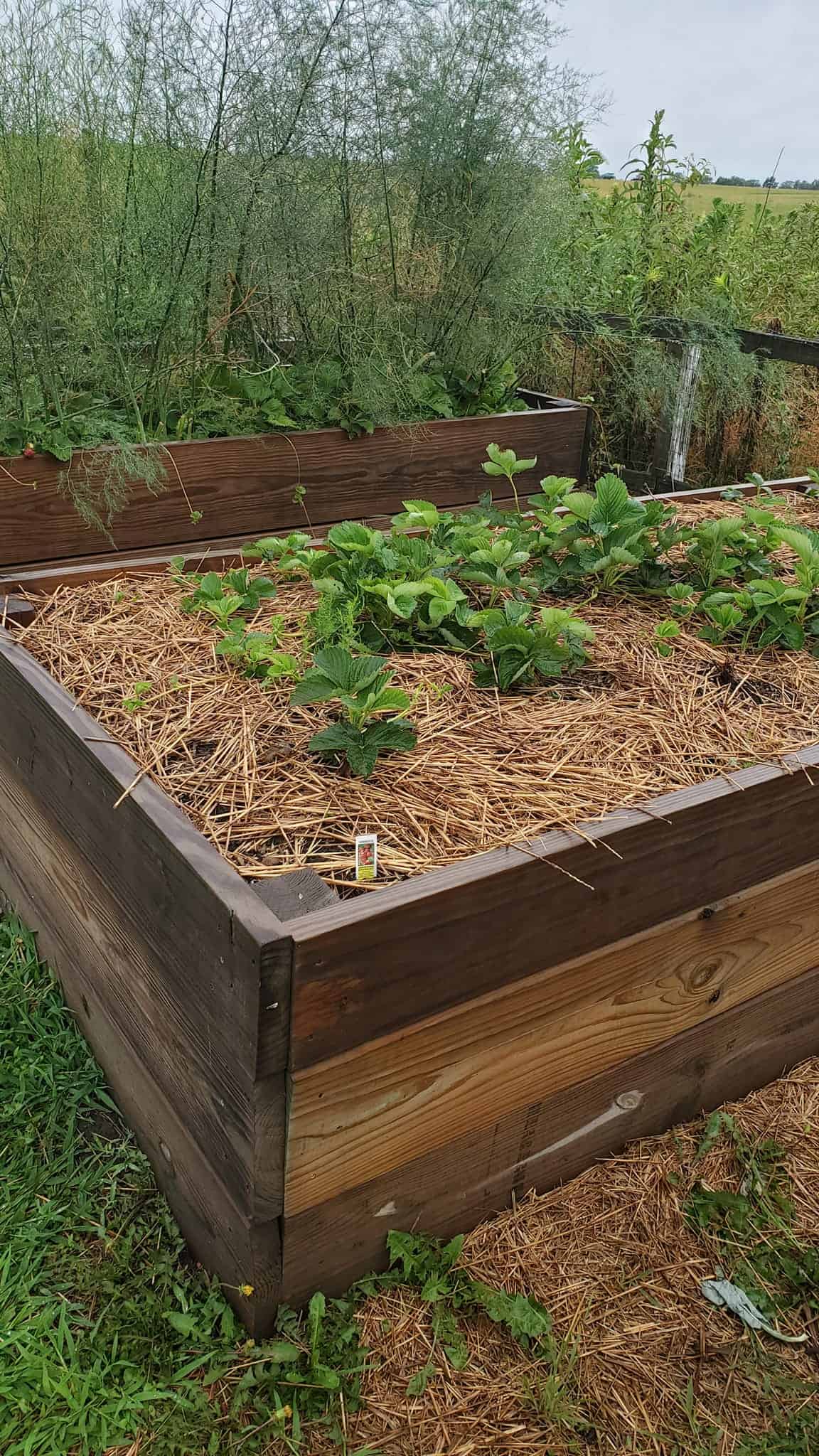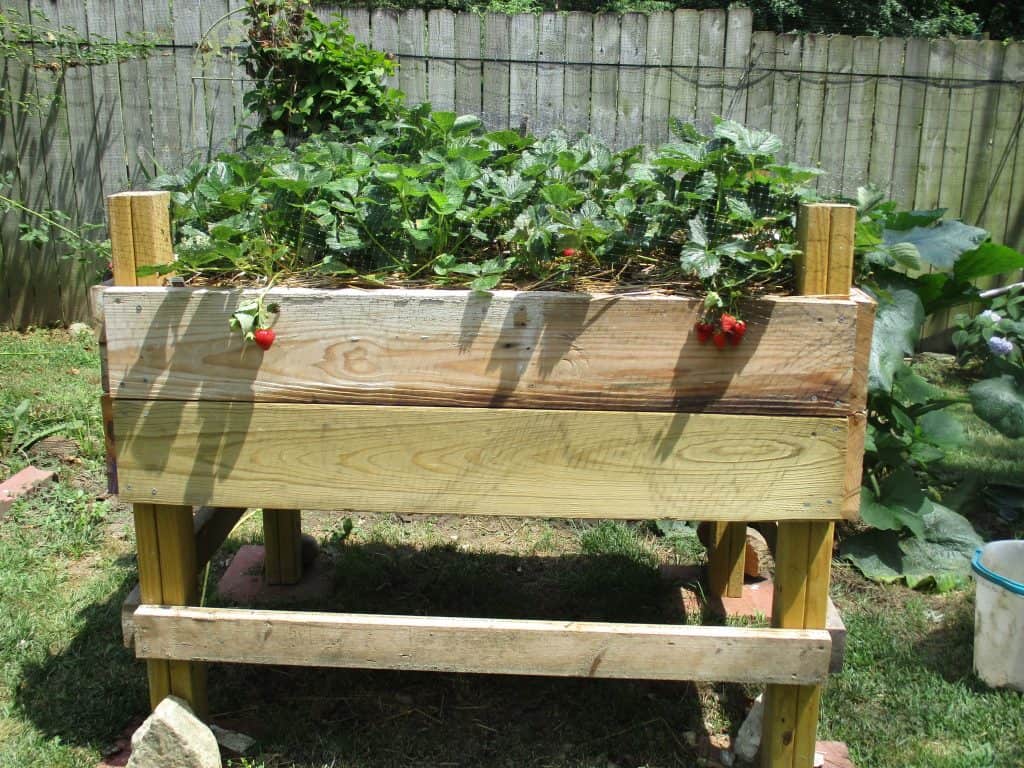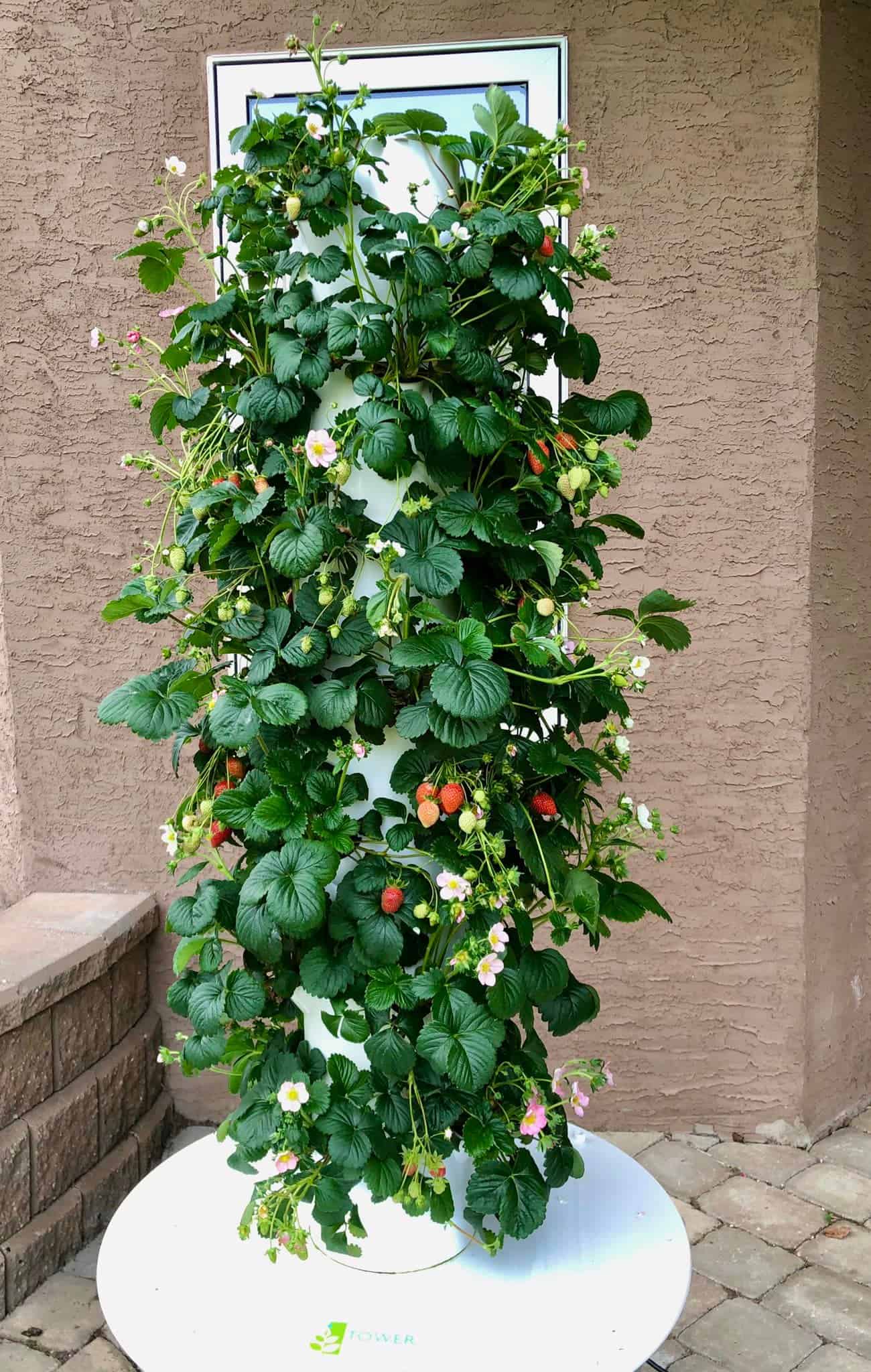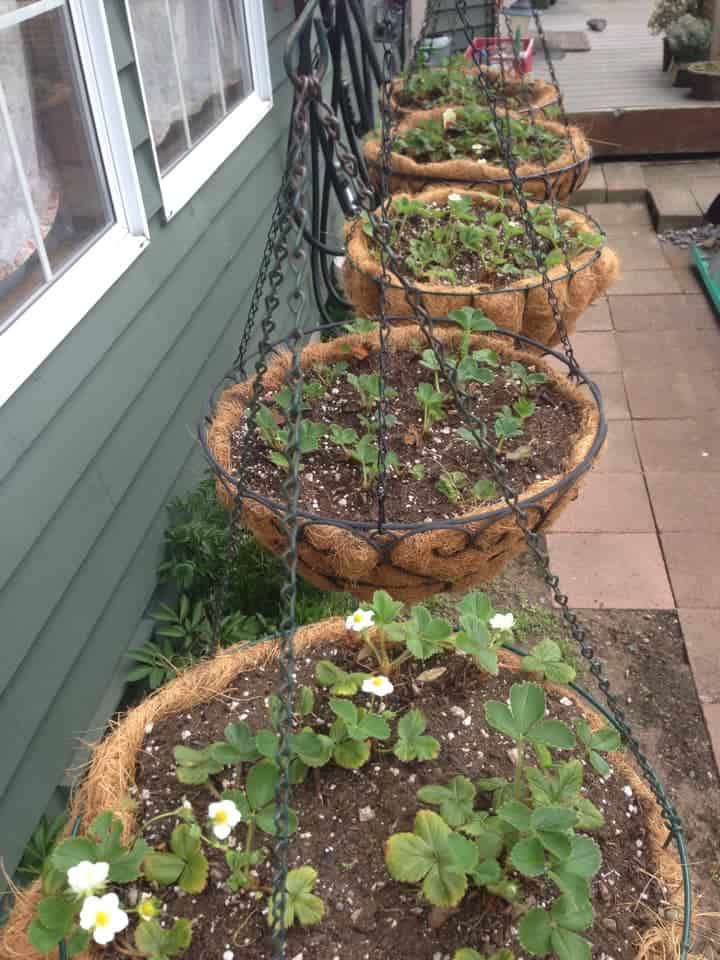Strawberries are oddly demanding. Not high-maintenance exactly, but picky. They want sun – lots of it. They hate soggy roots.
And they absolutely refuse to thrive in cramped, weedy corners. So yeah, where you plant them actually matters.
Now, if you’ve been thinking strawberries only grow in long, flat beds like they do on farms – nope. Turns out, they’re way more flexible than people give them credit for.
You can grow them on balconies. Stack them up in planters like a strawberry skyscraper. Let them spill over the sides of a wine barrel (looks amazing, by the way). Or go the classic route with tidy rows in your backyard.
In this article, I'll share six practical, totally doable strawberry bed setups whether you’ve got acres to spare or just a sun-drenched corner of your porch.
So, grab your favorite garden gloves (or not) and let’s get into it.
1. Raised Beds
Raised beds are probably the first thing that pops into a gardener’s head when thinking about strawberries – and for good reason. They're easy. They're tidy. And they flat-out work.
You build a box (or buy one), fill it with good soil, and boom – your strawberries are off to a great start. The best part? You control everything about the environment: soil texture, drainage, even what’s crawling in there (or not crawling, ideally).
I’ve seen people use cedar planks, galvanized steel, old bricks, even repurposed shipping pallets. Doesn’t have to be pretty – it just has to drain well. Though, sure, making it look good is a nice bonus.
Why raised beds are a win for strawberries:
- Soil warms up faster in spring. That means earlier berries.
- Drainage is excellent. No more soggy roots.
- Less bending over = less back pain.
- Keeps weeds in check (mostly).
- Easy to net if birds or squirrels get bold.
Raised beds shine in gardens where the native soil is trash like clay-heavy messes or compacted stuff from years of foot traffic. And if your space is limited, just make a smaller bed. Or two. Or twelve.
There’s no “one right way” to build a raised bed. Just make sure it’s at least 6 to 8 inches deep, has decent soil, and gets sun for most of the day. Strawberries like to bask.
2. Rows in the Ground
Going straight into the dirt feels… honest. Like gardening before it got trendy.
This method is exactly what it sounds like: rows of strawberries planted directly into your yard or plot. Nothing fancy. Just earth, sun, mulch, and time.
What makes rows worth considering:
- You can plant a lot of strawberries without much setup.
- It’s easy to expand – just keep adding rows.
- Works well if you’ve already got decent soil.
But you’ll need to mulch. That’s non-negotiable unless you like weeding for fun (no one does). Straw, pine needles, or chopped leaves all work. Keeps weeds down, locks in moisture, and protects the berries from touching bare dirt.
This setup makes the most sense for people with space to spare like a backyard with room to stretch or a garden that’s already in rotation.
It’s also great if you’re planning to grow strawberries year after year. Once they settle in, the runners will start taking over like tiny green invaders. In a good way.
Spacing matters here. You don’t want a dense tangle that invites mold or rot. Keep rows about 3 feet apart and plants about 12 to 18 inches apart in the row.
Trust me – it’s easier to maintain (and harvest) when you give them some breathing room.
3. Strawberry Cedar Planters
Simple, classic, and built to last. If you want a neat way to grow strawberries, a plain cedar planter is a fantastic choice. No fancy tiers or layers – just a solid box filled with rich soil and happy little berry plants.
Here’s why a basic cedar planter works so well for strawberries:
- Cedar holds up beautifully in the weather – naturally rot-resistant, smells amazing, and doesn’t need chemicals or treatments.
- It’s portable – so you can place it wherever you get the most sun (and move it around if you want to).
- Your strawberries stay off the ground, so there’s less chance of rot, fewer pests (if needed, try a natural pest control solution).
- Great for small spaces – a patio, deck, or even a sunny balcony.
- It just looks good – warm, rustic, and natural in the garden.
You can find cedar planters online or at local garden centers, or if you’re handy with tools, it’s a fun little DIY project. Just make sure you drill a few drainage holes in the bottom, and you’re good to go.
A plain cedar planter gives you a compact, charming spot to grow fresh, juicy strawberries without taking up a ton of space.
4. Strawberry Towers (Vertical Stacking)
Now we’re getting vertical. Strawberry towers are like the skyscrapers of the berry world.
They’re built by stacking planters on top of each other – flower pots, plastic containers, PVC pipes with holes cut into the sides… people get creative. And the result? A tall, narrow growing setup that’s ideal for patios, balconies, or even the edge of a driveway.
It’s the most space-efficient method out there, short of hydroponics.
Why vertical towers are a difference maker:
- Takes up barely any floor space.
- Perfect for renters or urban gardeners.
- Easy to keep berries off the ground (and away from bugs).
- Surprisingly productive for its size.
Of course, there’s a tradeoff. Towers dry out fast (really fast in summer) so you’ll be watering often.
Daily, most likely. Some gardeners add drip lines or reservoir systems to help with that, which is smart.
The key is stability. If it’s tall, anchor it. You don’t want your strawberry tower toppling over in a strong wind, crushing your precious crop like a fruit-themed Jenga accident.
The best part is watching strawberries dangle down the sides like little red ornaments and it’s weirdly satisfying.
5. Containers and Hanging Baskets
If you’ve got a patio, porch, balcony – or heck, even a wide-enough windowsill – you can grow strawberries. No yard required. That’s the beauty of containers.
Strawberries do surprisingly well in pots, grow bags, and hanging baskets. They don’t have huge root systems, so they’re happy in tight quarters as long as the soil is good and the drainage is solid.
Why containers work so well:
- Total control over soil and location.
- Easy to move if sunlight shifts or a storm rolls in.
- Great for small or temporary spaces (renters, this one’s for you).
- Baskets add a little visual flair – fruit cascading down is kind of a vibe.
Just one big warning: containers dry out fast. Like, “water every day in summer” fast. Sometimes twice a day if it’s hot and breezy. Use a moisture-retaining potting mix and mulch the top if you can.
And if you’re using hanging baskets, make sure they’re securely mounted – wet soil is heavy, and strawberries aren’t worth a broken toe.
One more thing: squirrels love strawberries in hanging baskets. They’ll climb anything. Ask me how I know.
6. Barrel Planters or Half Wine Barrels
There’s something rustic and charming about a big old barrel filled with strawberries.
Maybe it’s the wood grain. Maybe it’s the way the fruit spills over the edge like it’s trying to escape. Either way, barrel planters aren’t just pretty – they’re practical too.
These things are roomy. You can plant 10 to 12 strawberries in a single half-barrel, and they’ll have plenty of space to stretch out. Plus, the depth means better root development and moisture retention.
Why barrel planters make sense:
- Great for patios or small garden corners.
- Sturdy – won’t tip over in bad weather.
- Easy to maintain and harvest from.
- They age well – weathered barrels look even better with time.
If you want to get fancy, you can drill holes in the sides and plant there too – turning your barrel into a mini strawberry fountain.
Just make sure there’s good drainage. Most wine barrels don’t come with holes, so you’ll need to add some yourself.
And don’t fill it with just dirt from the yard. Use a loose, fertile mix with compost and something like perlite or bark for aeration.
It’s not the cheapest setup on this list, but it might be the best-looking.
Get your hands dirty, and let the strawberry patch begin!
There’s no single best way to grow strawberries – it all depends on your space, your style, and honestly, how much you feel like bending over.
Got a balcony? Go vertical or hang a few baskets. Dealing with tough soil? Raised beds will save the day. Want to go all-out and cover your yard in berries? Rows in the ground still hold up.
Whatever setup you choose, the key is sunlight, decent drainage, and a little attention when it gets hot. Strawberries aren’t fussy once they’re happy. And once they start fruiting, you’ll wonder why you didn’t plant more.
So – pick your setup, grab some starts or bare roots, and claim a patch for yourself. There’s something deeply satisfying about eating strawberries you grew five steps from your door.
Frequently Asked Questions (FAQs)
1. Can I mix different strawberry bed types in one garden?
Absolutely. A raised bed in one corner, containers on the patio, maybe a vertical tower near the shed – if the space allows, go for it. Different setups can help you stagger harvests or experiment with varieties.
2. How often should I water strawberries in containers or towers?
Every day in hot weather. Sometimes twice. These setups dry out fast, especially when exposed to wind or full sun. Stick a finger in the soil – if it’s dry past the first inch, it’s time to water.
3. What kind of soil is best for strawberries?
Loose, well-draining soil with lots of organic matter. A mix of compost, peat, and something like perlite or bark chips works great. Avoid heavy clay or anything that holds too much water.
4. Do strawberries need to be replanted every year?
Sort of. Most varieties are perennials, but after 2-3 years, production drops. You can let runners root and replace older plants naturally. Just don’t let things get overcrowded or tangled.
5. How can I keep pests off my strawberries?
Netting helps with birds. Slug traps or copper tape work for the slimy invaders. And if you’re dealing with squirrels – well, good luck. They’re clever. Just try to harvest before they do.
Ready To Transform Your Garden?
Are you looking for the best way to layout your garden beds? Maybe you're feeling a bit stuck on how to make the most of your space?
We’ve got you covered! Check out our 101+ Garden Bed Layout Ideas for your next raised bed project. This guide is filled with creative and practical ideas that can help you design a garden that fits your style, whether you’re just starting out or have been gardening for years.
Get your copy today and get inspired to bring your gardening dreams to life.








